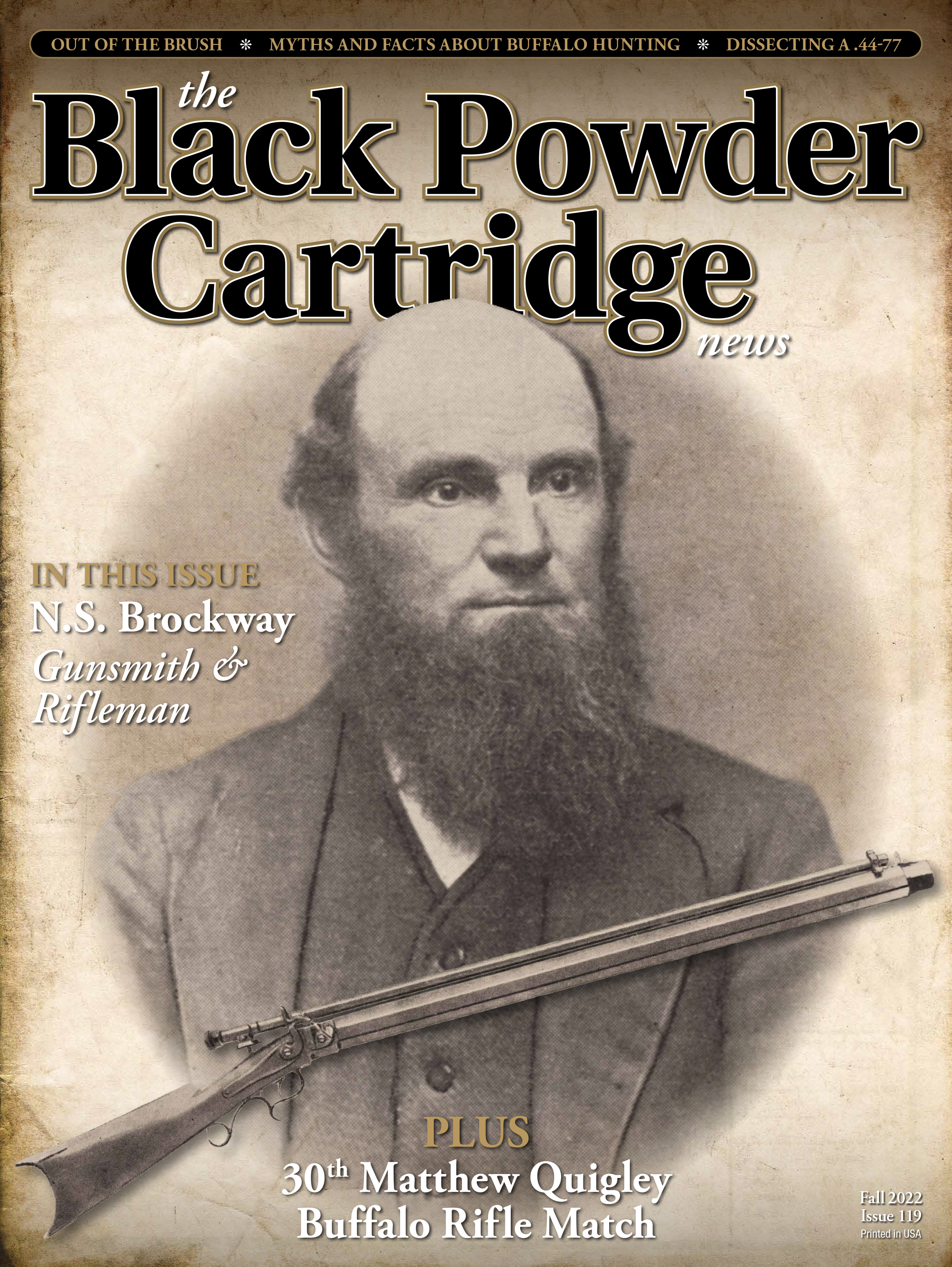Product Reviews
column By: Mike Nesbitt / Steve Garbe | August, 22
MVA Series 7000 Scope

Anyone who reads the Black Powder Cartridge News has heard or read about Montana Vintage Arms (MVA) scopes. MVA is a major producer of sights and scopes and their products are certainly worthy of our attention. At the same time, the Series 7000 scopes are not generally highlighted or mentioned and that’s the version of their scopes that I selected for my own rifle.
In the lineup of telescopes for black-powder cartridge rifles, the different models or versions are, speaking in general, based on the length of the scopes. A quick look at one of their ads will usually show this, as the Series 2000 is a 23-inch scope and the Series 3000 is 28-inches long. These scopes require mounting to blocks that are screwed to the top of the barrels. Then there are the Series 4000, 5000 and 6000 which are longer scopes, for longer barreled rifles, but those also need to be mounted to blocks on the barrel.
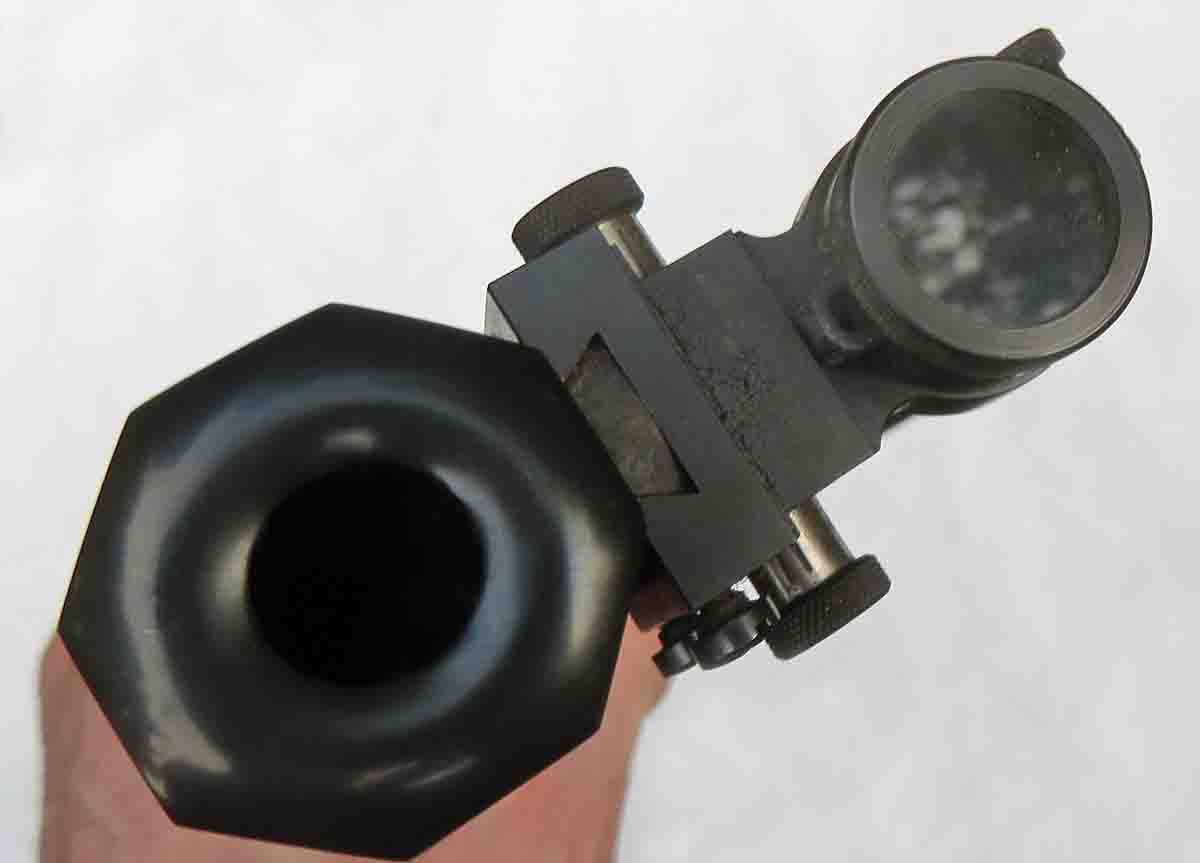
Mounting a scope to the barrel’s dovetails sounds like the easiest way to attach the scope but there are some things to be sure about. Mainly, you want to be sure that the mounts fit very tightly. There are “set-screws” in these mounts but, speaking from experience, those are not enough. Even with the set-screws, the scope blocks must be tight enough in the dovetails that they are driven into position (shimmed, if necessary) to guarantee a good, tight hold.
Now, about the MVA Series 7000 scope. It is six-power and has range adjustments for 10 yards to infinity. It has both parallax adjustment and an adjustment for leveling the reticle. The field of view at 100 yards is 10 feet. This scope is made of steel and the exterior finish is blued. It has a Pope-style rib (which keeps the scope from rotating) and a battery stop (because the scope can slide in the rings.) The mounts, front and rear, are both windage adjustable. Screw-on covers protect both ends of the scope and the forward or objective cover is clear. The buyer has a choice of reticles.
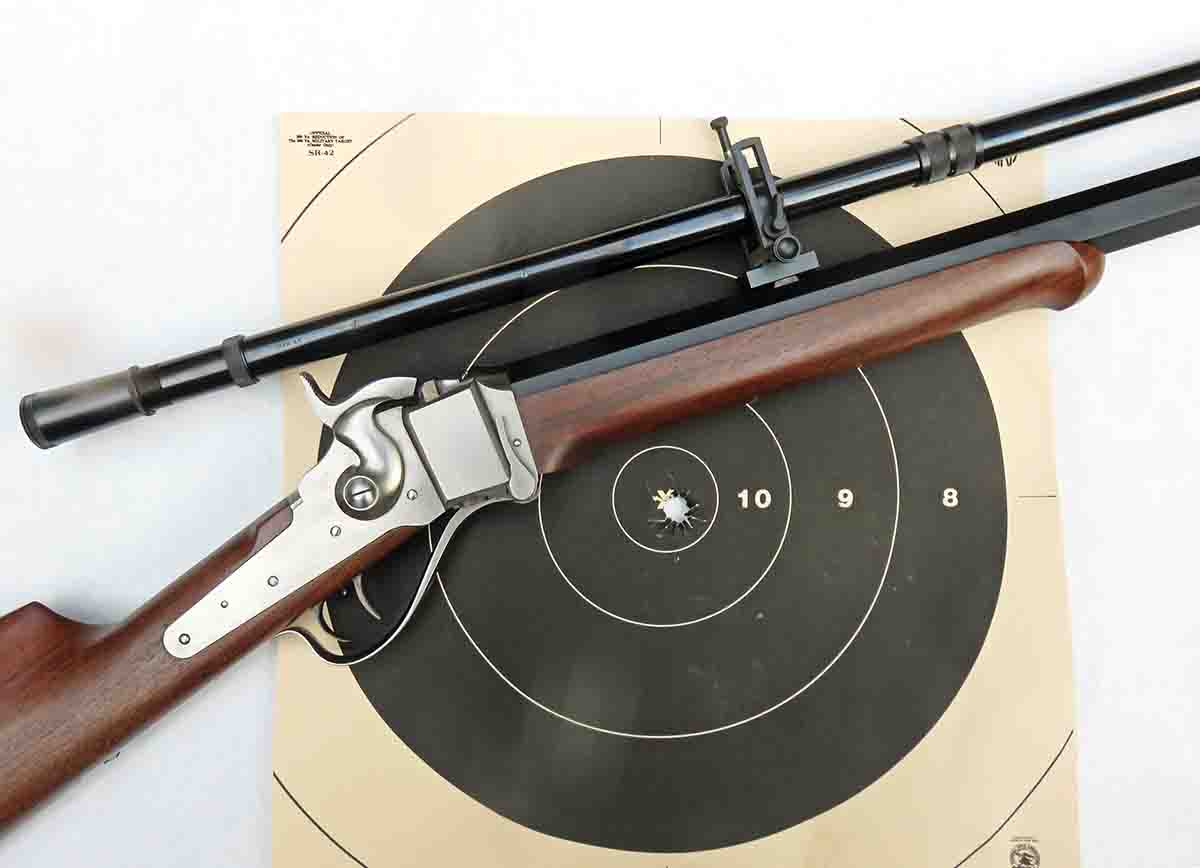
I had this scope ordered and purchased before the rifle was made to go with it. When I picked up my new rifle, a Bridgeport Model in .45-90, from C. Sharps Arms, I took the scope with me to their shop and had the scope mounted before accepting the rifle. That worked out very well, although a thicker shim was needed under the front scope mount and that was installed by my Quigley partner, Allen Cunniff.
Then, while shooting the scope-mounted rifle, I had fears that the scope would contact my glasses due to recoil. The eye relief is not very great, but because the scope slides forward when the rifle recoils, no contact has ever been made with my glasses. Just remember to slide the scope back against its stop before taking the next shot.
My first shots were taken on a large target after simply bore sighting the scope. A picture of that target is shown here and, no kidding, three shots were fired through the X-ring to make one big hole. That big target was posted at only 25 yards, just to be sure it wouldn’t be missed. While I might wish that target had been further away, it was still a very good beginning.
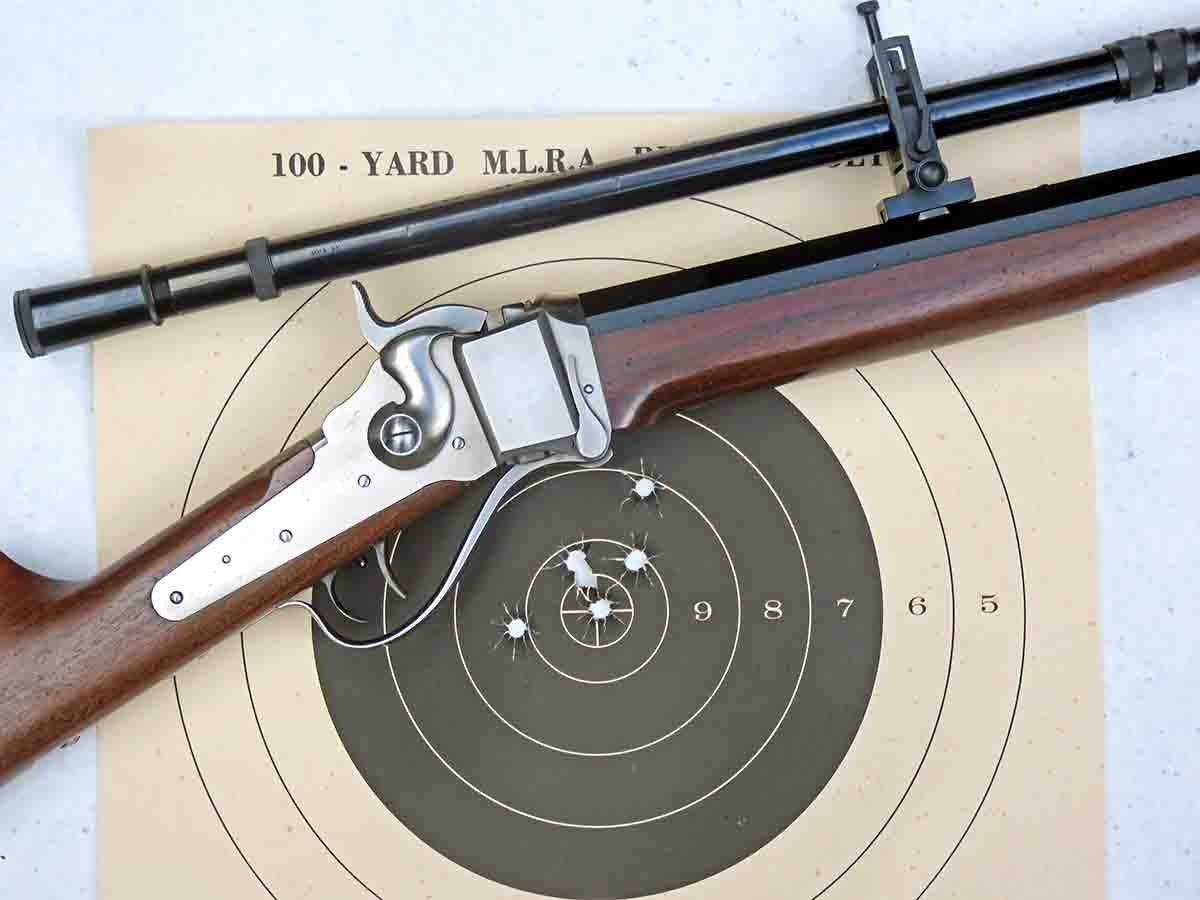
My shooting with this scope on the .45-90 rifle was done while using 550-grain bullets cast from a Hoch mould and loaded over 75 grains of Swiss 1½ Fg powder. At 100 yards, the rifle with this scope gave me a very good group. I haven’t tried the scope-sighted .45-90 at longer ranges at this time, but I can say that I’m far from being through with using it. In fact, I’m just getting started.
SPG Sales American Guild Wood Finish
by Steve Garbe
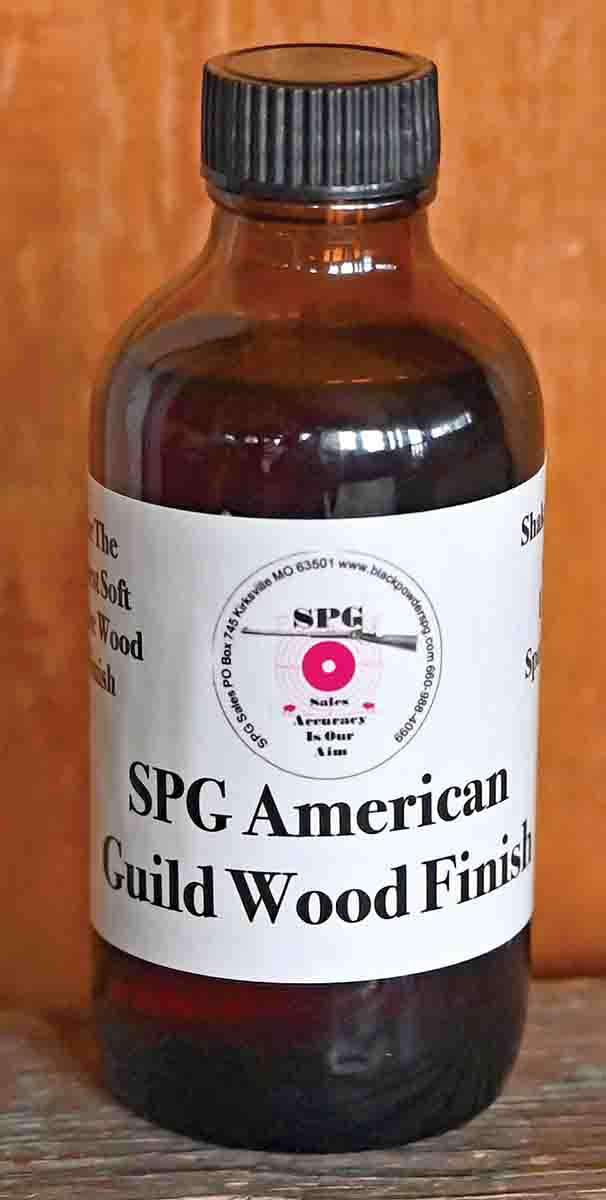
The American Guild Wood Finish is a thin, watery finish that I actually prefer for my projects, especially if used as a top dressing or as a repair agent on a previously finished piece of wood. I had a couple of stocks that needed to be brought up a bit, one with a modern satin-type finish that had sustained some damage, the other was an old, oil-finished stock that had gone very dull and lackluster.
I’m a believer of many thin coats of finish, hand-rubbed for the best job rather than a heavy one- or two-coat typical modern finish. I do not like sprayed finishes at all, as I think that the different light refraction from a hand-rubbed finish makes the all the difference.
Accordingly, I used the American Guild Wood Finish sparingly and rubbed it out well with the palm of my hand. The working time was about two to three minutes until it became tacky enough to leave alone. It did not ball up or roll under my palm and gave a very pleasing look to the old stock, bringing the figure up in the wood with one coat. The finish dried to a nice, subdued finish with just enough brightness to compliment the natural figure in the stock.
The damaged stock was already stained to match the original finish so I feathered the edges and applied the American Guild Wood Finish. It was easy to blend into the existing finish but I would say that it would require three or four more coats to really match things up.
At the time of this writing, I have not used the American Guild Wood Finish for a complete stock finishing job, but intend to use it on the MVA Highwall BPCR rifle that is soon to be on the bench. I think the new finish from SPG Products is a good one to have on hand, especially for restoration work. To order, contact SPG Sales, P.O. Box 745, Kirksville, MO 63501. Orders can also be placed on their website at blackpowderspg.com or phone 660-988-4099. Price is $20 per four-ounce bottle. Also, check out their complete line of quality products for the serious black powder shooter; there’s sure to be something there that you need.


